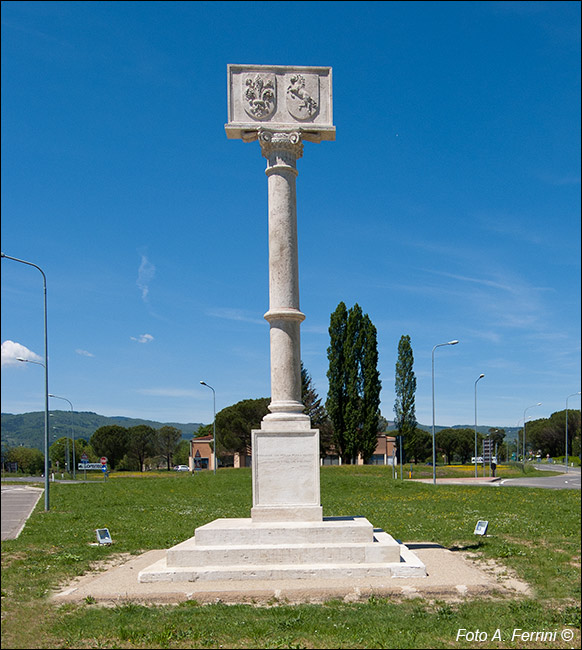Just about an hour outside of Florence there is a valley crossed by the Arno river, inhabited since ancient times, where nature has remained untouched, with beautiful forests and dotted with villages, castles and monasteries. This is the Casentino, a must-visit place for both nature lovers and literature buffs. Here you can follow in the footsteps of Dante and discover the places that played an important role in his life, and that as a result, he featured in the Divine Comedy.
The first of these places is the Campaldino Plain. Located between the villages of Poppi and Pratovecchio, it gave its name to the battle in which Dante took part as a Guelph soldier for Florence on June 11, 1289 at the young age of 24, against the Ghibellines of Arezzo. The event played a key role in the affirmation of the poet’s city over all of Tuscany, and he himself speaks of it in the Divine Comedy in the fifth canto of Purgatory. Today to remind us of this is Dante’s Column right where the plain begins, and it’s an evocative monument made entirely of marble.

Years later, exactly in 1310, the now exiled writer would return to the Casentino in the aforementioned Poppi, as a guest in the village castle owned by the Guidi Counts, lords of the valley at the time. Today it’s one of the best preserved medieval buildings in all the region, housing an impressive library, a chapel with stupendous frescoes, and a small museum dedicated to Campaldino. It was most likely here that Dante wrote the thirty-third and last, canto of the Inferno.
Later the immortal writer stayed in another castle of the Guidi, namely Porciano. Located in the upper part of the valley, a few kilometers from Pratovecchio in the direction of Florence, today there remains a magnificent tower in which, in addition to a hall dedicated to Dante, we find a small museum of local artifacts. It’s said that he wrote the famous letters destined for the Florentines and the Holy Roman Emperor Henry VII in 1311 right here. Whether you’re tracing Dante’s footsteps or not, from this place you can enjoy a breathtaking view of the surrounding countryside.
Not far from Porciano there is another Dantesque place mentioned in the thirtieth canto of the Inferno, the Romena castle with the underlying Fonte Branda. Tradition suggests that the poet himself lived there, and like the two mentioned above, it was a possession of the Guidi. Today there are substantial remains that evoke a magic atmosphere, perhaps due to the fact that it seems to be at one with the surrounding nature. And just a few steps away you can find another artistic gem, the Romena church, considered one of the most important in Tuscany.
The valley boasts the Foreste Casentinesi National Park, dominated by fir and beech woods among the best preserved in all of Europe, which led UNESCO to place it on the list of World Heritage sites in 2017.

And it is precisely here that you can find the beautiful springs of Monte Falterona where the Arno River is born, mentioned by the great poet in the fourteenth canto of Purgatory. A short distance from the spring, the Lake of the idols, that Dante likely passed while on his way to Romagna.
But the Park is not only about history and communing with nature; there are also two convents which were very powerful during the Middle Ages, and still today are destinations for pilgrimages. One of them is La Verna Sanctuary, the place where St. Francis received the stigmata in 1224, and which Dante mentions in the eleventh canto of the Paradiso, while the other, the Camaldoli hermitage, founded by St. Romuald and seat of a community of Benedictines, is in the twenty-second canto.
Close enough to Florence so that it makes a comfortable day trip, the sites are as unlike the city as one can imagine and add an immeasurably deep dimension to the historical richness of your visit.












